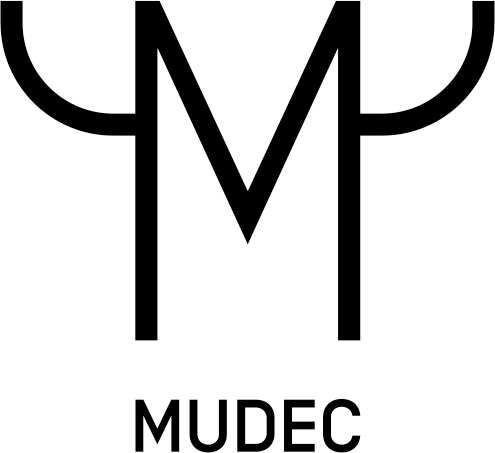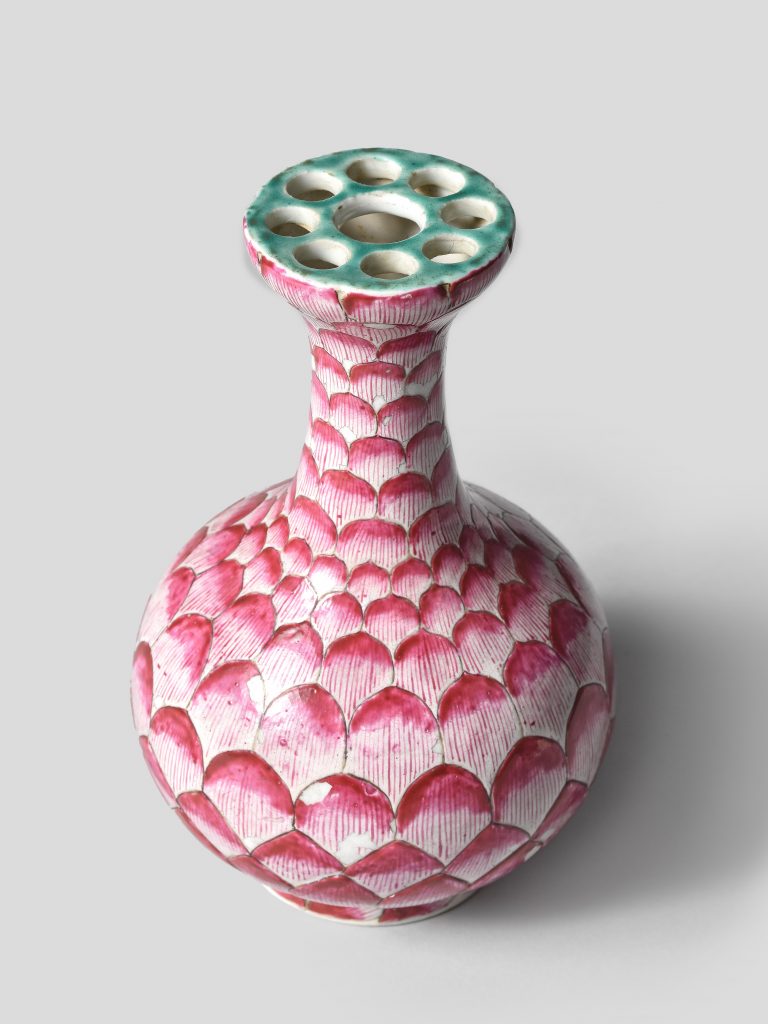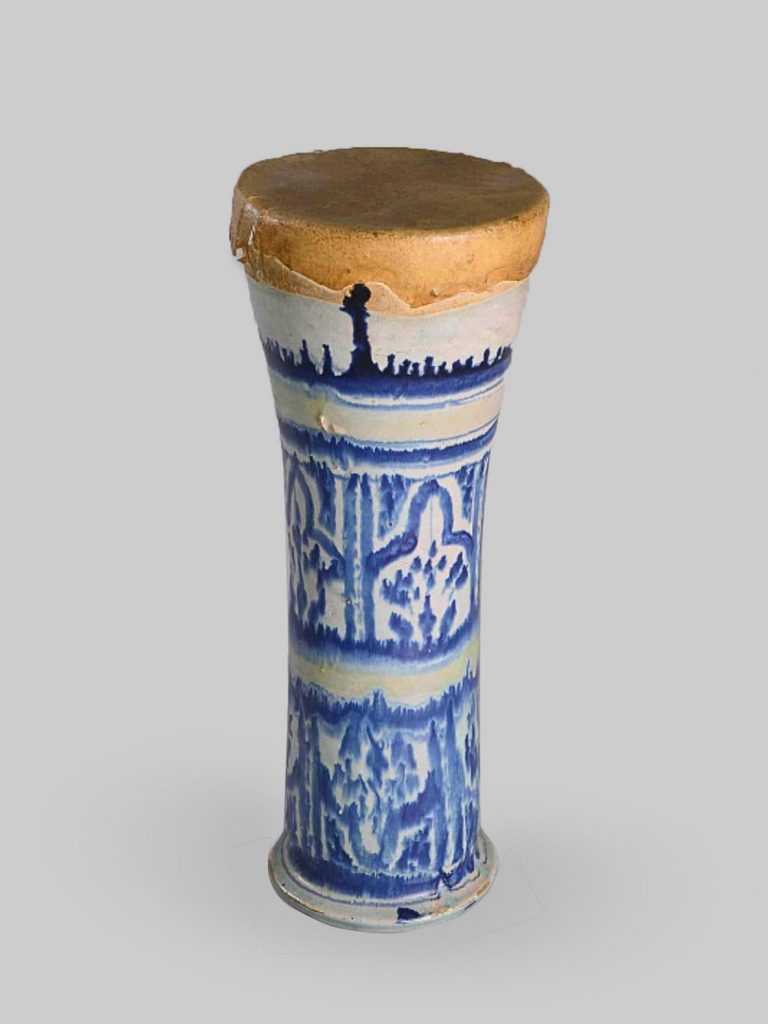Mudec Storage: behind the scenes of the Museum

Accessible storage
The collections are visible in the Museum’s storages on the ground floor and can be visited by the public on appointment. The displays have been arranged according to geographical and chronological criteria. The provenance of the works: West and Central Africa, the Middle East and Far East, South America and Central America, Southeast Asia, and lastly, Oceania.
The earliest works bequeathed to the Museum come from a number of Milan’s state institutions such as the Brera Archaeological Museum, the Municipal Art Museum and the Museum of Natural History, while more recently, as the project for the Museum of Cultures became a reality, works have been acquired from or bequeathed by private parties. The works in the municipal art collections comprise over 7,000 objects that span three millennia, from 1500 A.D. to the twentieth century.
The Pre-Columbian and American Indian Collection: 1,627 items
The African collection: 1,162 items
The Alessandro Passaré Collection of African and Oceanic works of art: 448 items
The Franco Monti Collection of African works: 33 items
The Islamic art collection: 436 items
The Chinese collection : 1,028 items
The Japanese Collection: 1,574 items
The Southeast Asian Collection: 285 items
The Mariangela Fardella and Giorgio Azzaroli collection of Asmat art: 26 items
The hats and fans collection: 124 works
The ethnographic collection of musical instruments: 295 items
Navigate the map by selecting the area of interest.
AFRICA
One’s visit to the Museum’s storerooms starts off in the African section.
The African art collection is divided into two parts. The first is a series of objects from the earliest holdings of the Sforza Castle Museums; they belonged to the ethnographic collections put together during the period of Italy’s colonial expansion into Eastern Africa and were brought back to Italy by 19th-century travellers such as Giuseppe Vigoni and Achille Bertarelli. This small number of artefacts which survived the bombing of Milan in 1943 has been selected for the display case that opens the section devoted to the African continent.
The second group of sculptures and masks comes from Sub-Saharan Africa.
In addition, part of the collections belong to the well-known scholar Ezio Bassani, the physician Alessandro Passaré and Franco Monti.
Lastly, the collection includes masks and ceremonial sculptures in addition to a sizeable number of utensils and other objects (such as carved wooden doors and locks from Mali) and several small clay statues from the ninth up to the sixteenth centuries. Overall, this collection offers an introduction to the material production of West and Central Africa.
Guinea, Baga population, sec. XX, wood, metal tacks. Nimba, ritual shoulder mask. This particular mask, a representation of the mother, refers to the parallel between the fertility of women and the fertility of the fields: her performances, which take place on all socially important occasions, promote births and rains, the growth of children and that of rice.
Africa, probably assembled in Benin, late century. XX, pearls, glass, shells, seeds, copper alloy. This necklace was created for the export market, the container is adorned, in the lower part, with three rows of pearls from which numerous decorations emanate. The object is the result of an assembly of numerous elements of local, European and Asian origin. The highest number of beads is made up of beads obtained from recycled glass pieces of different colors produced in the Krobo area. There is also a large number of pearls made from glass dust, some of which are of ancient workmanship.
CHINA
The next section of the Museum is devoted to China. The objects consist mainly of pottery and porcelain, and allow visitors to trace the history of the use of these materials from the Tang dynasty (618-906 A.D.) to the Ming dynasty (1368-1644) and up to the 18th century and the production of works known as ‘chine de commande’: extensive table services made in China on commission, for export to the West.
The project “Milanese cinema series: a collection to be catalogued” ended in 2018. Interconnections between Lombardy and China in the collection of the Museum of Cultures”.
Thanks to the generous contribution of the Lombardy Region, over 500 cataloging cards have been updated on the SIRBEC platform relating to the collection of works from China. A team of experts has re-studyed the works, specifying dating and cultural attributions, in light of new contextual research.
The project, which also includes a dedicated photographic campaign, is aimed at documenting the heritage, a fundamental step for the valorisation and protection of the works.
Chinese manufacture, second half of the Qing Dynasty (1644-1911), enamel porcelain from the pink or fencai family. Flask-shaped vase with short circular foot, decorated over the entire surface with the motif of lotus flower petals in pink with palpable enamel. The mouth, in green, has the shape of the lotus fruit, a detail that makes it an extremely rare specimen. A similar model is preserved in the Shanghai Art Museum.
Chinese production, 18th century, porcelain. “chine de commande” type tea service. Between the 17th and 18th centuries in Europe there was a growing interest in “chineseries”, accompanied by the demand for artistic artefacts such as porcelain, lacquer, paintings, bronzes, jade; the city of Canton therefore specialized in supplying commissioned art objects produced exclusively for export.
Beijing (Yuanmingyuan), 1750 – 1780, glazed stoneware. The subject is a “long-lived” Buddha Amitayus in the colors of yellow, green and blue, resting on a throne formed by a rectangular support enamelled in blue with a double row of lotus petals decoration. The sculpture, an important architectural decorative element, comes from the imperial temples of the Qianlong emperor in Beijing.
Chinese production, 19th century, Qing Dynasty (1644-1911), bronze, lost wax casting, patination and fretwork. Censer in the shape of a mythological unicorn crouching on a rock base, with its tail raised and its head turned in profile with its jaws open. On the back, the central hole of the stove is surmounted by a lid, which fits together on three points, perforated and made up of some objects joined together, including: a ruyi scepter, a flask, a butterfly banner, a pearl and a horn shell. The pose of the creature, with the head turned backwards, is traditional, but the presence of a perforated lid and objects makes the artefact quite original.
Chinese production, 19th century, blanch de chine procellana. Statuette depicting Guanyin on a rock pedestal with dragons and lotus flowers (?) at the base and two praying children. The bodhisattva is depicted crowned with a child in his hands. On his right the amrita flask and on his left a book. The hair and lotus are decorated with light carving under the blanket.
JAPAN
The Museum’s collection of Japanese art includes over 1,500 articles from the Momoyama period (1573-1615) up to the Meiji period (1868-1912). The collection of porcelains, fabrics, bronzes, armours, lacquers, ivories and items strictly connected with the Japanese tradition provides a clear picture of the history of the arts and culture of this country.
In the middle of this section is shown an extraordinary lacquered wood saddle and mask from the Edo period (1603-1868). Along the sides, western-style wooden furniture made in Japan have been placed, as well as two-panel wooden screens with different colored lacquers, featuring maki-e (“sprinkled picture”) with ivory inlays (Meiji Restoration 1868-1912).
Japan, second half of the century. XIX, bronze and champlevé enamel statuette of a Chinese lion (karashishi), with its hind legs raised and its front legs flattened on the ground. Champlevé is an ancient Limoges enamel decoration technique, which involves hollows or cavities being dug into the surface of a metal object and filled with vitreous enamel. Bronze is a typical object created for export.
Japanese manufacture, 19th century XVII, wood, lacquer, gilded copper, silver, gold. Stationery box (bunko) in lacquered wood and decorated with various techniques variations of maki-e (“sprayed gold paint”). The decoration is made up of images inspired by the Hatsune chapter of the Genji monogatari: on the external surface of the box you can see a pavilion, a stream and a series of pine trees (matsu); there is also the mon (heraldic symbol) of the Tokugawa, repeated several times, and the inscription of a poem of thirty-one syllables.
Japan, 19th century Tobacco bag (tabako-ire) in leather covered with fabric worked partly in gold, with metal mesh. On the outside the leather is covered in blue velvet, while on the inside there is a floral decoration in gold leaf on a blue background. On the closing flap of the bag there is a metal buckle (kanagu) depicting a dragon (ryu). The carved ivory netsuke, however, depicts a frog, a snake and a snail: a very popular iconography in Japan, known as Sansukumi (literally “tripartite dead center”). The snake eats the toad but can be killed by the snail’s poison, the toad eats the snail but can be killed by the snake, finally the snail can kill the snake but can be eaten by the toad.
AMERICAN FIRST PEOPLE
Another very conspicuous nucleus is that of the pre-Hispanic and Amerindian collection. The collection devoted to pre-Hispanic and American Indian art consist of pottery, fabrics and objects made from a wide range of materials (e.g. feathers, seeds, ivory, wood and precious metals). It testifies the variety of items produced in Central and South America, from archaeological findings in Mesoamerica and the Andes (enriched by generous bequests by Federico Balzarotti and Giovanna Torricelli) and from the recent long-term loan of the HN Inuit Collection (61 sculptures from the Canadian Arctic Archipelago),
to modern-day (contemporary ethnography of Brazil, bequeathed to MUDEC by the physician and world traveller Aldo Lo Curto).
The collection of pottery from the Andes covers a vast time frame from the end of Formative period (1500 B.C.) to the Spanish conquest (17th century).
Argentina, before 1000, terracotta. Anthropomorphic vase depicting a steatopygian Venus, with a large upper opening and lateral handles. Coarse grey-cream colored dough shaped by hand; mouth, nose, eyes, eyebrows and ears applied. The vase represents a seated female figure with enormous legs and buttocks that serve as the base of the vase. The face has incisions that simulate tattoos. The eyebrows and ears are represented by two lines in relief, without interruption, which depart from the root of the nose and which are decorated with engraved horizontal lines. Coffee bean eyes (one is missing).
Brazil, Kayapò culture, second half of the century. XX, cotton, feathers and vegetable fibres. Head ornament made of cotton, quills and feathers. The cotton backing is made up of numerous intertwined cords. The 181 feathers are arranged in a single row to grow in height from the ends towards the center, 153 are red and 28 brown. It is fixed to a support made of buritì palm fibers using special laces. Used by high-ranking male people on ritual occasions.
ISLAMIC ART
In this section are collected objects from the Islamic areas: North Africa, the Near East and parts of Central Asia. Very relevant is the collection of carpets, dating from the 16th to the 19th century, which includes exemplars from the Ushak manufacture (16th – 17th century). Some pillows from the city of Bursa, where there was a famous imperial factory, are also on display.
The collection also includes an exhibition of ceramics, ornamental or for everyday use, the oldest ones from Iran and Syria dating from the 12th and 13th centuries.
Among the ceramics are reported numerous tiles from Syria dating from the 16th and 17th centuries that were used to embellish the sacred buildings.
Türkiye, XVII, silk velvet. Fabric decorated with staggered rows of stylized brocaded carnations on a red background. Each floral form is composite; two leaves with a serrated profile (saz) open from an arabesque motif with a stylized tulip in the center from which seven fringed carnation petals originate. Along the short sides there are six folders still containing stylized floral motifs. The stylized and open carnation is one of the most popular motifs among the fabrics produced in Bursa by the imperial factories and executed in numerous variations.
Syria, 1590-1610, ceramic. Square-shaped tile painted in blue, green, mauve and white under transparent glazing. The decoration is divided into three vertical bands. In both lateral bands there is a continuous frieze of palmettes. The wider central part is decorated with a flower vase with a double mouth and arched handles. On the sides of the vase, decorated with spheres superimposed with motifs similar to grains of rice, tulips and carnations can be recognized.
SOUTHEAST ASIA AND OCEANIC ISLANDS
The collection of Southeast Asia and Oceanic Islands art can boast a great variety of works of different kinds, made of an array of materials from many different periods, including textiles, Indian clothing, 20th century weapons and ornamental items from the Solomon Islands. The collection keeps growing, thanks to bequests by missionaries and private collectors.
Its original core was a 19th century bequest by the PIME (The Pontifical Institute for Foreign Missions), enriched by subsequent bequests and loans by benefactors from Milan such as Alessandro Passaré and Aldo Lo Curto. Recently the collection has been enriched with purchase and loan of Asmat’s culture objects from the private collections of Leigheb – Fiore and Fardella – Azzaroli.
Thailand, Ban Chiang, 300 – 200 BC terracotta, burial vase with red decorations. These vases, decorated with red spirals and hooks, are typical of Ban Chiang’s funerary sites in northeastern Thailand. They were generally buried together with the body, containing food or other objects useful to the deceased in his afterlife.
Indonesia, XX, wood, lime, red ocher, coal dust. The shield has a rectangular shape with red symbols on white backgrounds, decorative elements typical of the central Asmat region. These designs are ainor symbols, used on shields for the purpose of terrorizing enemies. In the upper part of the shield there are two figures of ancestors sculpted and painted in red and black, which protrude from the shield itself and represent its tjemen.
HATS AND FANS COLLECTION
The hat and fan collection includes 124 works dating from the 19th and the 20th centuries and coming from all parts of the world.
Some of the fans dating back to the 18th century are made of paper, wood, and straw, featuring rich decorations and appliquès such as bird feathers.
China, 19th century, silk and wood. Pien mian (“to cover the face” in Mandarin) screen fan in white silk taffeta, with floral embroidery in polychrome silk and decoration painted in ink and colors depicting ladies in an interior and in a garden. The frame is octagonal and the handle is in ebonized wood, with a slightly arched shape.
ETHNOGRAPHIC COLLECTION OF MUSICAL INSTRUMENTS
The visit to the museum’s holdings is rounded out by a section devoted to musical instruments which overlaps with all the other sections as the instruments come from all the geographical areas covered.
Pakistan, first half of the 20th century wood, leather, horsehair, steel, brass, mirror, nylon. Sarinda (bowed lute), heart-shaped sound box, partially covered with leather that forms the soundboard; on the case five mirrored circles surrounded by silver-colored circles; same decorations on the thickness and on the curl; six pegs (and four missing). Various decorations with colored thread tassels.
Chinese production, Yueqin (Moon Guitar), wood, natural fiber. It is the main short-necked lute of traditional Chinese music with a “guitar” body, i.e. made up of assembled boards and not a block of wood hollowed out to obtain a shell. The name can be translated as “moon-shaped stringed instrument”, due to the perfect circularity of the sound box. The other typical morphological character of Yueqin is the handle, which is particularly short. According to Chinese tradition, Yueqin dates back to the 3rd-5th century. A.D. (period of the Minor Dynasties). Today it is mainly dedicated to the accompaniment of singing in an intermediate field between that of classical music and the truly popular one.
Marocco, 20th century, leather, painted terracotta, rope. The chalice-shaped body, painted in light blue, forming two bands with motifs typical of Arab popular decoration, opens upwards into a modest conical flare, over which a membrane of animal skin, probably mesoderm, is stretched, secured by means of glue. In Morocco it is considered first and foremost the women’s drum, mainly in urban environments, where mainly brightly painted versions circulate in the markets. It is held with one hand at the narrowest point and the membrane is struck with the other hand, usually without resorting to particular performance techniques, but still obtaining elaborate rhythmic effects due to the superposition of multiple blows inflicted simultaneously on as many drums.
ACCESS MODALITIES
For study purposes, it is possible to make an appointment to visit the storerooms by writing to c.museoculture@comune.milano.it.
Guided tours must be booked in advance and are subject to the availability of museum staff.
A special programme of guided tours of the storerooms is part of the programme linked to the installation ‘Luce dietro tracce incompiute’ by Mariana Castillo Deball.































